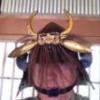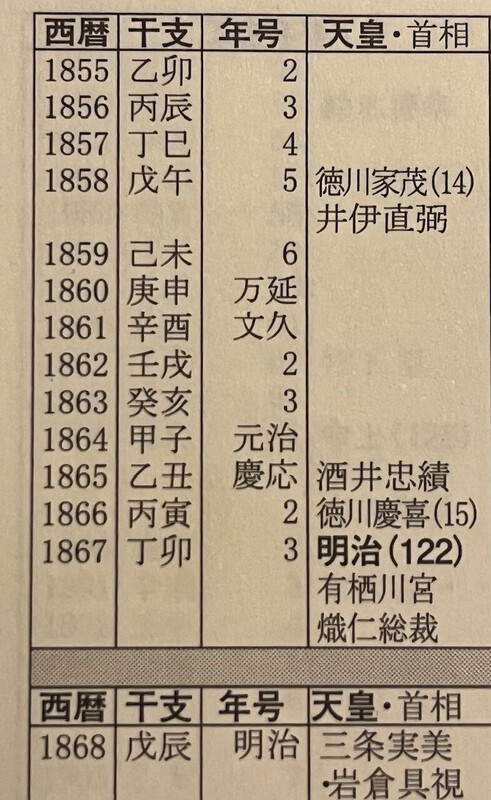-
Posts
13,823 -
Joined
-
Last visited
-
Days Won
250
Content Type
Profiles
Forums
Events
Store
Downloads
Gallery
Everything posted by Bugyotsuji
-
I think it's the other way round. You often see kozuka and kogatana in shirasaya, and some people collect them that way. The owner of yours must have really liked the kogatana, so decided to make/carve (or have carved) a special 'proper' koshirae for it. Kougeihin folk art? Possibly kept in a drawer as a paper knife, but not really fashionable nowadays.
-
横断幕 Oudanmaku might be the best description.
-
As to value I think it helps in general to have a Mei on it. If it’s a well-known name you may have the issue of possible gimei (fake signature) but although your smith is listed ( a good thing) there would be little point in faking that particular signature. So, overall, a very good first purchase, I reckon. PS I like the way that little windows are opened in the lacquer to show the probably original signature.
-
Ah thanks, that confirms it. It's not text, by the way, but Tomomichi's art name, 白陽任 Hakuyonin. Even that is more than Sasama knew!
-
PS Your other thread is here:
-
No, that one I translated for you on the other thread. It's 知道Tomomichi +作 saku (made by) , but Sasama says that apart from being a mid-Edo armorer, nothing else is known about Tomomichi. Some kabuto signed Tomomichi are known, however.
-
Hello Henrik, I've already done it for you. Is this a different thread? Can you get a clear shot at a different light angle of that last kanji? 白陽....任(?) Hakuyo.... nin(?)
-
Can you get a good shot of that first kanji, Ed?
-
知道 Tomomichi, mid Edo Period, almost nothing known about this armorer, except there are some signed kabuto. (Sasama)
-
If read top down, it could be a single kanji written in 角字 Kakuji (square, right-angled letter) font... 角字 フォント - 検索 画像 (bing.com)
-
Check out 源氏香 'Genji-ko' Mon or Kamon, Grev. (Genji incense)
-

Seppuku knife with dragon horimono
Bugyotsuji replied to browntrout's topic in Translation Assistance
Way back when, there was a time when working people carried a Tosu/Toshi 刀子 (small knife) (sheath knife) in the mawashi at the back for everyday jobs. Could this not be Ainu, BTW? -
The original sale site says they are gold-plated solid silver. "Menuki ShiShi, signed 白原 清十郎, SroharaSeijyurou, Shirahara sei jūrō, about 36 mm each, solid pure silver + gold plated 24 K, box included." Menuki ShiShi, 白原 清十郎, SroharaSeijyurou, Shirahara sei jūrō 36 mm MX120505 | eBay
-

Opinions requested about the outline shape of this Tsuba
Bugyotsuji replied to goo's topic in Tosogu
You asked us not to be shy and to offer our true opinions, but despite what Dale says about "well-liked" I find this mokko shape itself to be rather conservative and boring, but that's just me! My wife actually likes odd-shaped and out-of-kilter craft items. -

Opinions requested about the outline shape of this Tsuba
Bugyotsuji replied to goo's topic in Tosogu
Do you want us to offer our opinions/feelings about the four-lobe mokko shape in general, or on that particular tsuba? Or are you asking if this tsuba is suitable to function as a pattern? The photo is off-set, so we cannot see the 'true' outline of the tsuba you are showing. -
Hi Henry, you could contact the Murakami Suigun Museum directly for more precise answers to your questions. The Mayor of one of the islands I visited was called Murakami, and he told us proudly of some of their history. https://www.visitehi...om/en/see-and-do/212
-
Try 螺旋 Rasen, ゼンマイ Zenmai spiral, 模様 moyou (pattern). For example: ゼンマイ螺旋調模様 - 検索 画像 (bing.com)
-
It all hangs on the (illegible) top Kanji in p.2
-
And the answer to the quiz, for anyone who struggled with it, is to look at 1868 on my diary page above. A short war broke out in that year, and they called it the ‘Boshin War’, after the Eto symbols 戊辰 Boshin. Short /o/ sound in Boshin. Another famous example was the great gun registration of 1872, Meiji 5, putting a 壬申 ‘Jinshin’ mark and number on each gun. And the cherry on the cake is 2024, the year of the dragon, (which is 辰 tatsu, another character for dragon'), more properly in the 60-year cycle 甲辰 Koshin/Kinoe-tatsu, or 'armored dragon'. See 2024, the yellow one in the pink chart here: 干支-年齢早見表 (nenrei-hayami.net)
-
Bruce, there is a sixty year cycle of years, and each year is allotted one character from a 10-character ‘wheel’ and one character from a 12-character wheel. (Like two interlocking cogs turning and giving you a double-character designation for each year.) Don’t ask me to justify their usage of old Chinese fortune characters, but that is what they did, perhaps giving a different reference of certainty in a constantly changing world. They are more like symbols, rather than having individual meanings. The two photos above are just parts of pages from my swords diary year reference. They tell the ‘Eto’ characters for a given year. How to pronounce the Eto however, takes a different kind of chart, which I have not yet posted in this poor Francis’s thread. If I post the chart (assuming it has not yet been posted here on the NMB before) I want it to be somewhere easy for people to find. Your question about the purpose of 亥after 3, I tried to answer earlier, but it is a piece of the official 2-character year designation. Swords and armour often have these revolving characters within the year notation, written slightly smaller and offset slightly, and sometimes only the right one as a kind of shorthand. 1863 was more properly written 文久三癸亥年 but in the sword above: 文久三亥年 …and yes, as you say, an auspicious day in August. Hoping this helps!
-
AC DC? Depends on your leaning, Bruce. I could put the chart up here but then no one could find it later. Make a sticky? (Unless there's a link on the site already somewhere...) Here is Bunkyū 3, see attachment. (All you need now is the key to reading them. By the way, a famous war is also listed by ‘Eto’ there!)
-
Bruce, you need a sexagenary chart to read them off. Bunkyu 3 is 'Mizunotoi', and the alternative reading of 癸亥 (the two kanji), is 'Kigai'. This is shortened on the blade above to the second kanji 'gai' only, a kind of extra date key.
-
The water gives the game away and the Kikusui prize goes to... Stephen.





